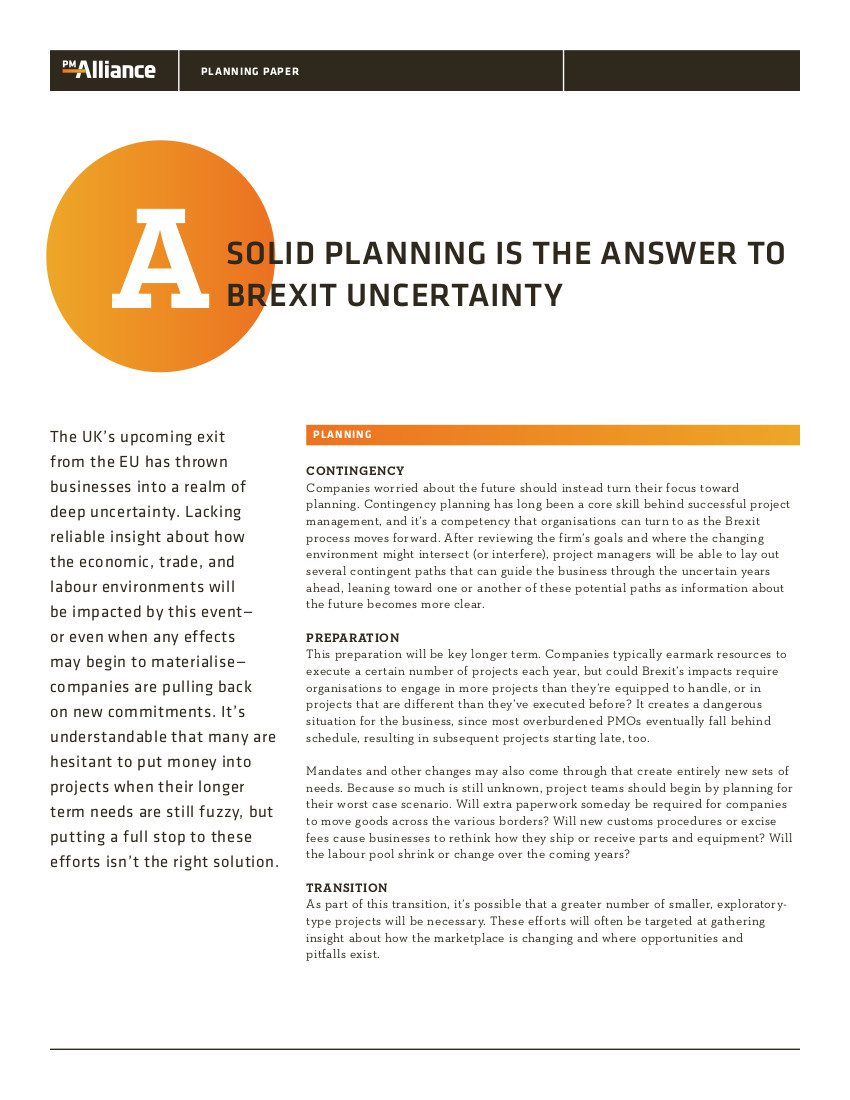
Solid Planning is the Answer to the Brexit Uncertainty
Companies worried about the future should instead turn their focus toward planning. Contingency planning has long been a core skill behind successful project management, and it’s a competency that organizations can turn to as the Brexit process moves forward. After reviewing the firm’s goals and where the changing environment might intersect (or interfere), project managers will be able to lay out several contingent paths that can guide the business through the uncertain years ahead, leaning toward one or another of these potential paths as information about the future becomes more clear.










